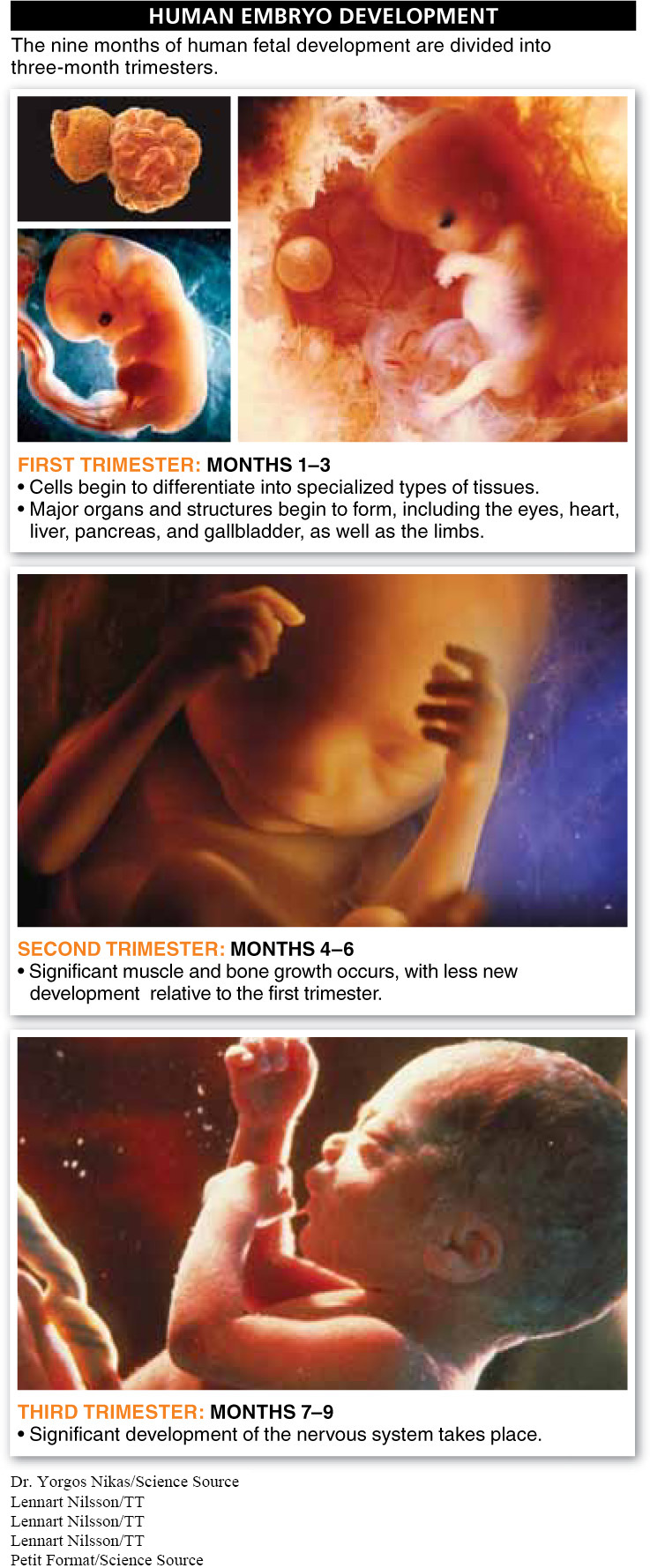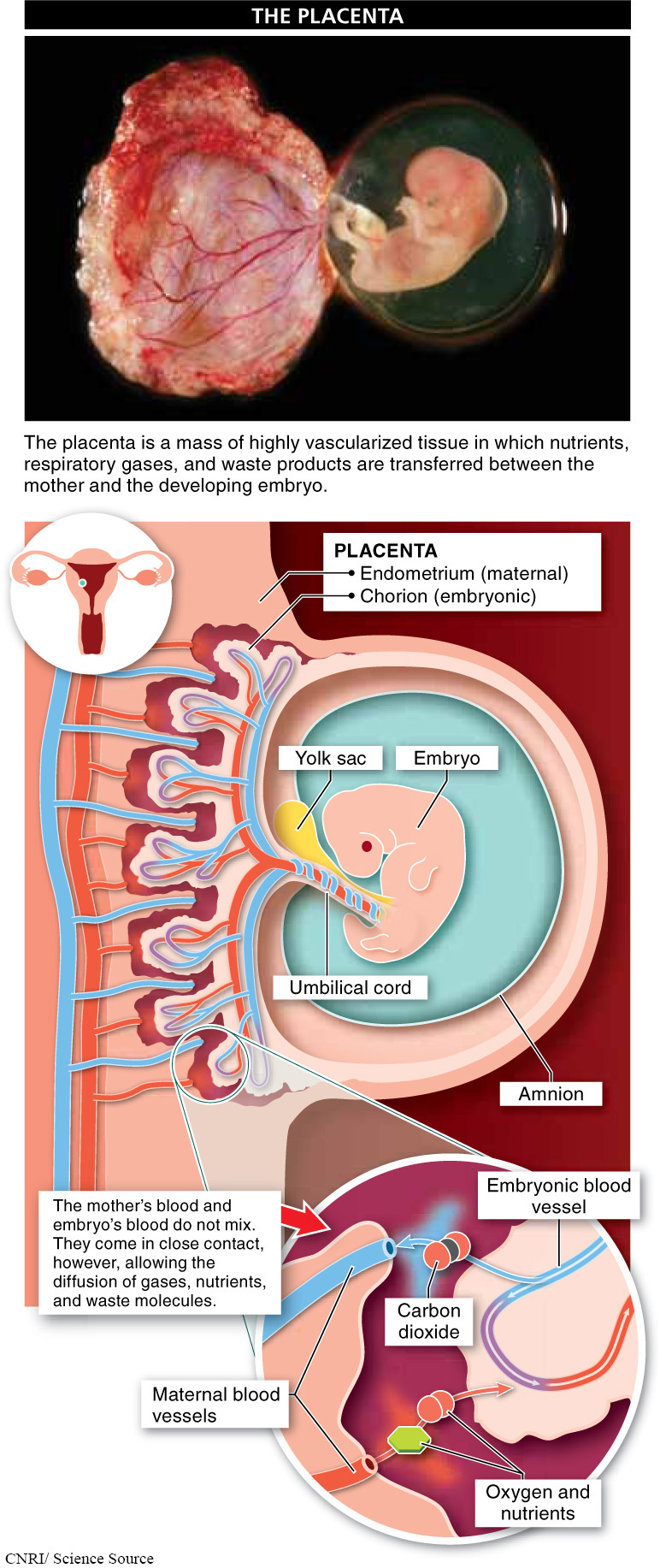25.14: There are three stages of pregnancy.
The development of a human embryo and fetus is usually divided into three equal periods of approximately three months each. (The fetus stage begins about 8 weeks after fertilization, when the organs and other major structures first form.) Each trimester is characterized by specific features and developmental milestones (FIGURE 25-28).

First Trimester The first three months of development are characterized by relatively little growth, at the end of which the fetus is only about two or three inches long and weighs about an ounce. Much more important than growth during the first trimester is development and the differentiation of cells into specialized types of tissues. Here are some of the chief milestones (times indicate how much time has passed since fertilization).
First month
30 hours: The first cleavage occurs.
60 hours: The second cleavage occurs. In both cleavages, there is no overall growth, just cell division.
6–
2nd week: Gastrulation occurs, and three distinct tissue layers develop. The placenta also forms, as two membranes grow around the blastocyst—

Although the mother’s blood and the embryo’s blood do not mix, they come in very close contact at the placenta, and oxygen diffuses from mother to embryo as carbon dioxide diffuses from embryo to mother. The placenta also nourishes the embryo and secretes hormones, including hCG, which maintains the corpus luteum, ensuring continued secretions of progesterone and, consequently, maintenance of the endometrium.
1033
3rd week: Neurulation occurs.
4th week: Major structures and organs, including the eyes and heart, begin to form. At this point, it is also possible to see the arm and leg buds.
Second month
During this time, the limbs take shape. The major organs, including the liver, pancreas, and gallbladder, can also be seen. In spite of such dramatic development and differentiation, very little growth has occurred yet, and the weight of the embryo is about one gram, less than one-
Third month
During the third month, the nervous system develops, as do some of the first reflexes, such as suckling. At this point, the corpus luteum finally degenerates. In the absence of the progesterone it has been producing, a new ovulatory cycle would typically (i.e., without pregnancy) occur, but because the placenta produces significant levels of estrogen and progesterone (which inhibit the production of FSH and LH), no ovulation occurs. Around the 10th week, the fetus’s heartbeat usually becomes audible, and the development of mammary glands in the mother’s breasts is also stimulated, in preparation for later milk production (lactation).
Second Trimester Months 4, 5, and 6 of a pregnancy are a time of significant growth and less new development relative to the first trimester. During this time, as the bones get bigger and the muscles develop, the fetus moves around and the mother can often feel it kick. The heartbeat becomes much louder, and its “whooshing” can be heard easily with a stethoscope. Although the fetus cannot survive outside the womb at the end of the second trimester, its size has increased to about 600 grams (1.3 pounds) and 12 inches in length.
Third Trimester The third trimester is all about growth, as the fetus ultimately becomes large enough to survive outside the mother (the minimum size for survival is generally about 1.5 pounds, or 680 g). Lung maturation also occurs during the third trimester and is associated with the production of increasing amounts of surfactant, consisting of compounds that reduce the surface tension and increase the lungs’ ability to inflate and deflate without collapsing. The lungs of premature infants commonly have insufficient surfactant and are structurally immature. As a consequence, the infant may have difficulty with gas exchange and suffer from infant respiratory distress syndrome, which is the leading cause of death in premature infants. In addition to growth and lung maturation, during the third trimester there is significant development of the nervous system. The addition of new neurons occurs at the explosive rate of 15 million per hour, a rate that continues even after birth.
1034
TAKE-HOME MESSAGE 25.14
The nine-
How is ovulation suppressed during pregnancy?